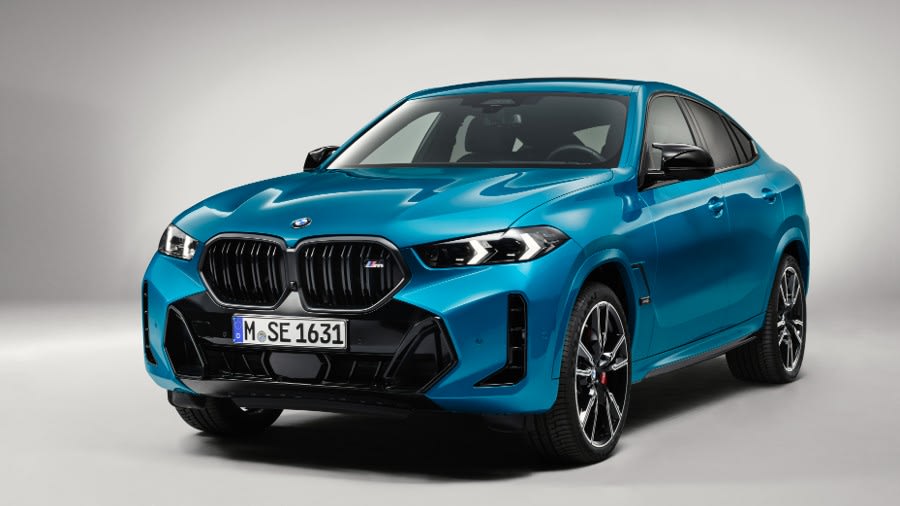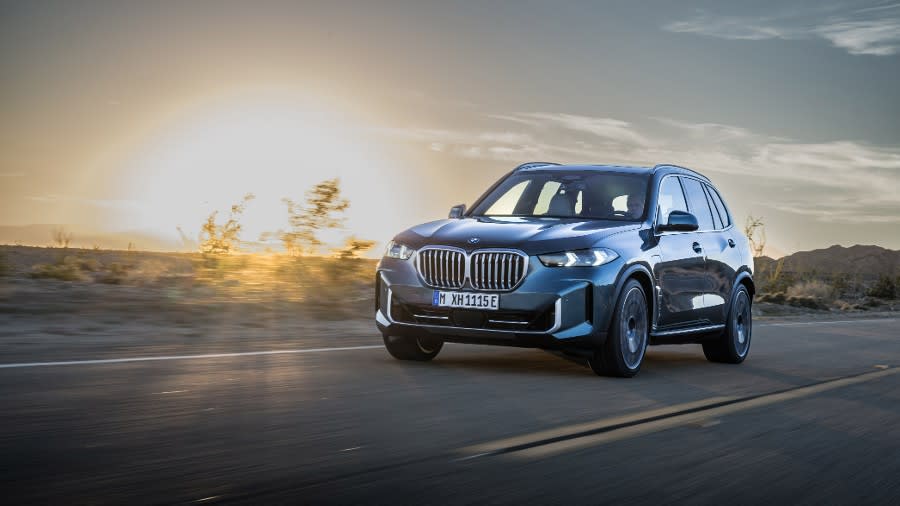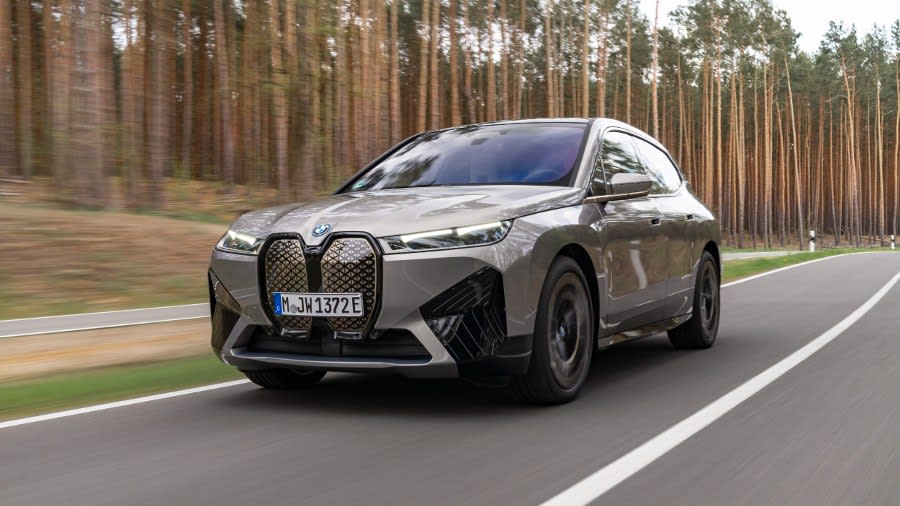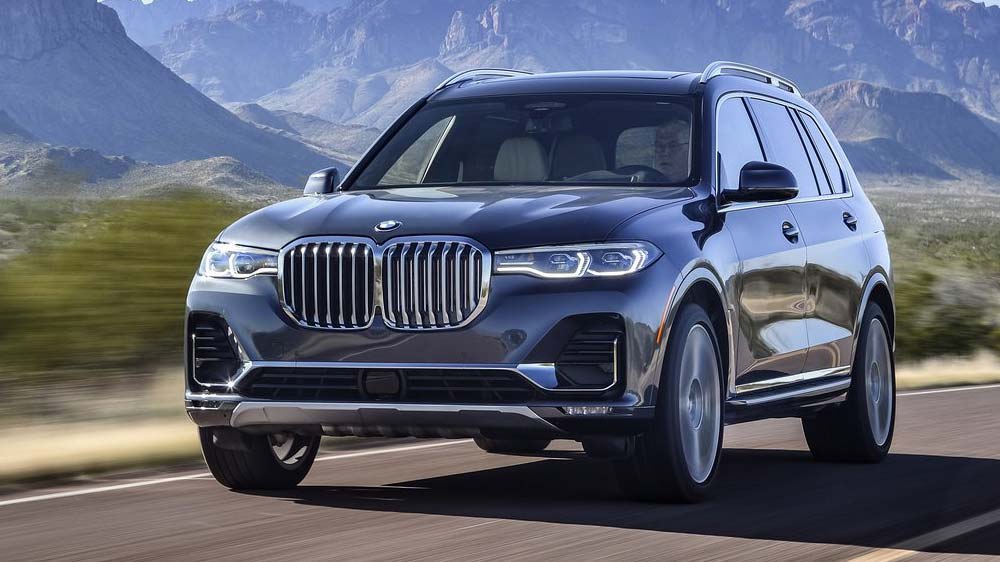
BMW X7 Review

Introduction
It comes to something when you think the BMW X5 isn’t luxurious enough. But that’s exactly the customer for whom BMW created the even larger, even plusher X7. Designed to combine the limousine space and refinement of the 7 Series with the versatility and capability of the company’s ‘X’ range of 4x4s, the enormous, brutish X7 is actually a big softy.
Review Sections
Select's rating score* - 4.1 / 5
At a Glance
This is the flagship of the BMW range, so luxury is the order of the day. The rugged SUV stuff is there, but it’s very much in the background. Even basic models get all the equipment you’ll ever need, and they represent the best value for prospective customers. However, those who want their X7 to look sportier and more distinctive might be tempted by the M Sport models, or the high-performance M50i. All three iterations offer space by the bucketload, quality to rival cars with twice the asking price and plenty of presence. Nobody can say they didn’t see this thing coming.
Key Features
The big grille might be divisive, but the X7 is packed with features that are simply good ideas. Not only can you find bags of space, but the optional captain’s chairs give it that real high-riding limousine feel, while the ability to seat six or seven adults in comfort will be welcome for some. But the details really make the X7 what it is, from standard air suspension that cossets you home to optional climate control for the cupholders, it does quite simple things with real class.
Performance & Drive
Just three engines are offered for the X7, with each providing something slightly different. The 40d 3.0-litre diesel is the entry-level power unit, but it still offers 340hp. Sending its power to all four wheels via an eight-speed automatic gearbox, it’ll manage 0-62mph in 6.1 seconds. That’s hot hatchback performance.
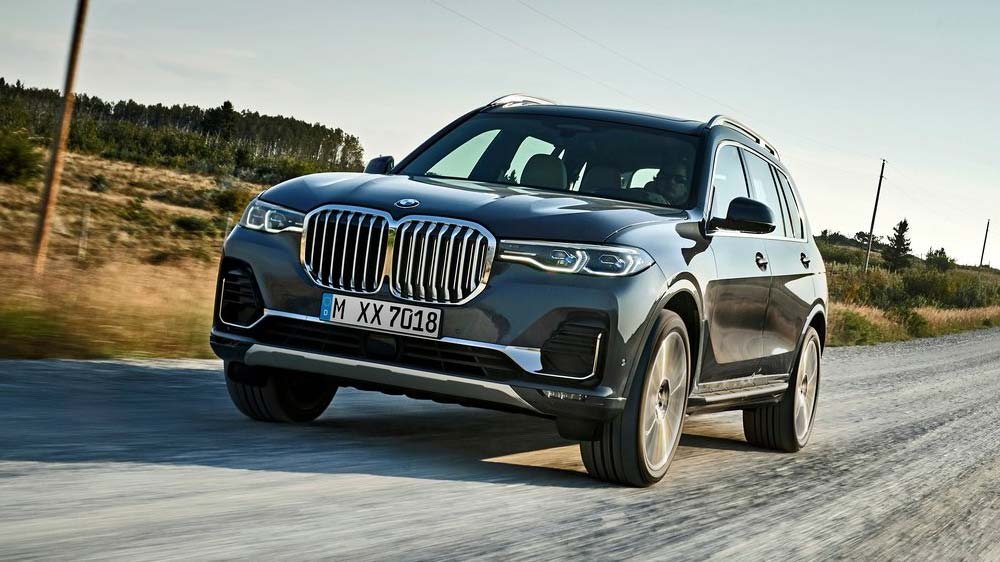
If diesel isn’t your cup of tea, there’s always the 40i engine, which is a staggeringly smooth 3.0-litre turbocharged petrol engine. It’s quiet and refined, but with 333hp it’s slightly less powerful than the 40d, and the 0-62mph dash takes two-tenths of a second longer.
If, on the other hand, you really care about speed, you’ll be left with just one choice: the 530hp 4.4-litre V8 of the M50i model. That enormous grunt takes the 2.5-tonne 4x4 to 62mph in 4.7 seconds, and that’s well into sports car territory.
Despite that speed – and BMW’s reputation for great handling – the laws of physics and the enormity of the X7 combine to end any illusions of sportiness. Instead, it has a nicely cushioned ride and the soundproofing keeps you isolated from the chaos and noise of the outside world. It’s a very relaxing thing to drive or be driven in, as long as the road isn’t too narrow.
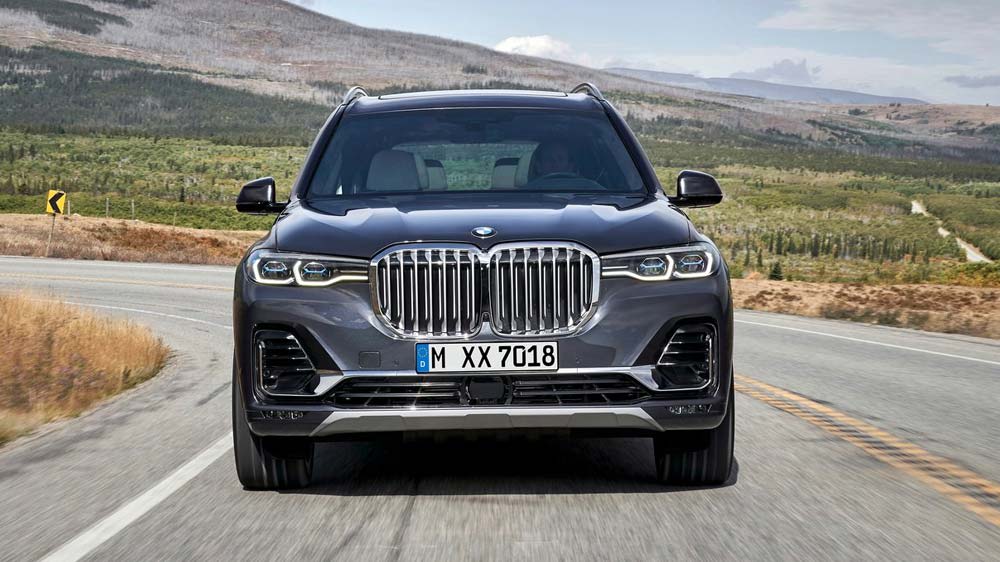
But don’t think that means it’s some wallowy bus that’s forgotten what made BMW’s so popular with driving enthusiasts. The X7 does roll a bit, but it has power in reserve and feelsome steering, which makes it a more enjoyable drive than might reasonably be expected. It’s also competent off-road, although it doesn’t quite have the rough-and-tumble capability of a Range Rover. Still, it’ll get you through rough terrain if you ask it nicely, and it’s certainly more than comfortable with muddy fields or snow. Let’s face it, that’s all most of us will ever need.
Running Costs
If you’re worried about fuel costs, you probably won’t be looking at an X7, but those who do want to keep their bills in check will be looking at the 40d engine. The 3.0-litre diesel is capable of between 34.9 and 36.2mpg on the official economy test, which isn’t stellar, but it’s better than you might expect from something this enormous. It’s certainly better than the 40i and M50i petrol engines, which manage a measly 27mpg and 23mpg respectively.
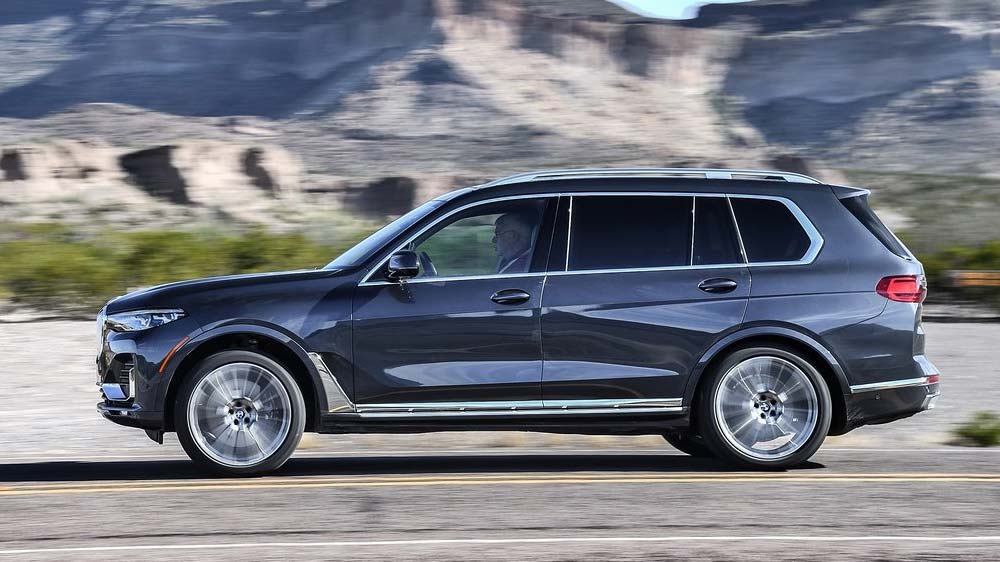
Similarly, if CO2 emissions are your main concern, the diesel is closest to acceptable levels. The 3.0-litre engine pumps out CO2 at a rate of 203-212 grams per kilometre, which makes it the cleanest model in the X7 range. That said, if you’re a company car driver and you’re fortunate enough to be offered an X7, every version will attract a 37% Benefit-in-Kind tax rate.
That being so, the diesel is your best option, simply because it has the lowest asking price and therefore the lowest P11D value. That said, the 40i is only a tad more expensive, so if you live in or around Bristol, where diesel cars are soon to be banned, then it might be worth considering the petrol engine.
Interior
The X7 cabin design is much the same as any other BMW, so it’s inherited the same high level of quality and ergonomics. Everything works properly and everything can be found exactly where you expect it to be, but the experience isn’t what you might call exciting. Yes, BMW has jazzed things up a bit with some posh wood trim and lashings of chrome, but a Mercedes-Benz GLS is ultimately more stylish.
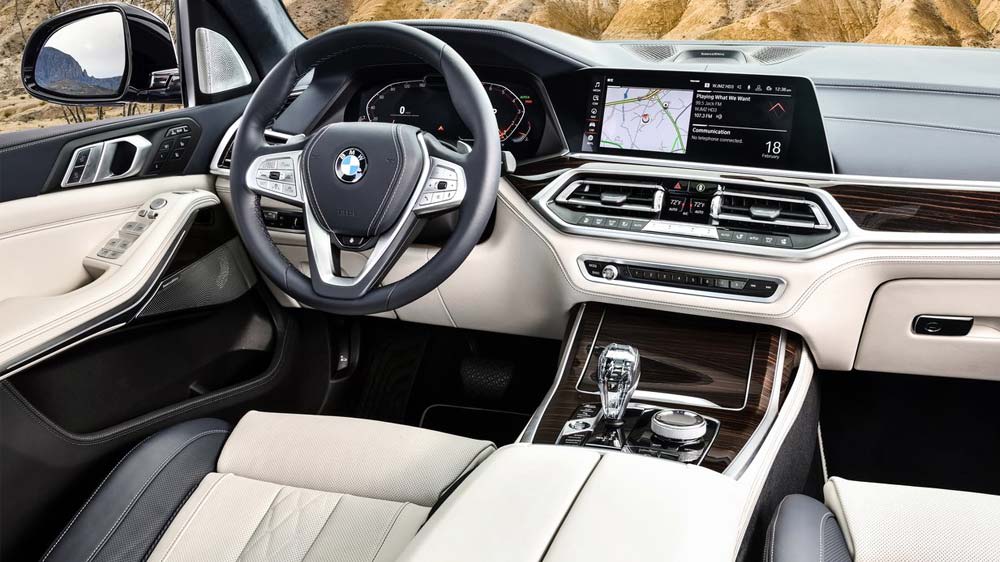
It’s comfortable, though, with supportive seats and a sense of light and air that comes from the huge windows and the panoramic glass roof. Even the third row of seats, which normally feel like something of an afterthought in big SUVs, feel much less oppressive than you might expect. Perhaps more importantly, however, you get the sense it’s built to last. Where a Range Rover can feel a little flimsy in places, the BMW feels rock solid. It’s every bit as well built as a Bentley Bentayga, and accolades don’t come much bigger than that.
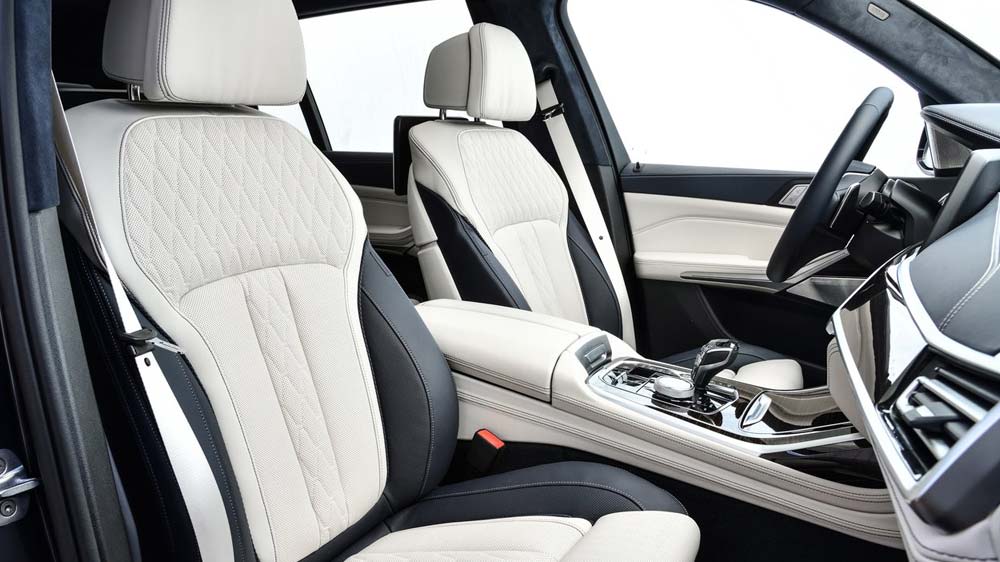
Apart from the fit and finish, the highlight of the X7’s cabin is the infotainment system. It’s the same unit fitted to most BMWs these days, and it’s a digital ode to intuitiveness and function. Not only can you control it by touching the screen, but you can also use a control wheel arrangement in the centre console, which means once you know your way around, you don’t have to lift your eyes from the road. But if that sounds too much like hard work, you could always use the gesture control. You can dismiss unwanted phone calls with a waft of your hand or change the volume by drawing a lazy circle in the air. Okay, so the gesture control isn’t perfect and doesn’t always work as intended, but it’s still one of the best systems on the market.
That infotainment system is backed up by a range of other high-tech features, including a digital instrument display that condenses all the necessary information into one 12.3-inch display. It isn’t quite as clean as, say, a Volvo display, but it’s still very competent and functional in that BMW-ish way. That’s complemented by wireless charging and, if you tick the right options, a crystal-clear head-up display that changes depending on which driving mode you’re in. It sounds like a gimmick, but it’s less frivolous than some might have you believe.
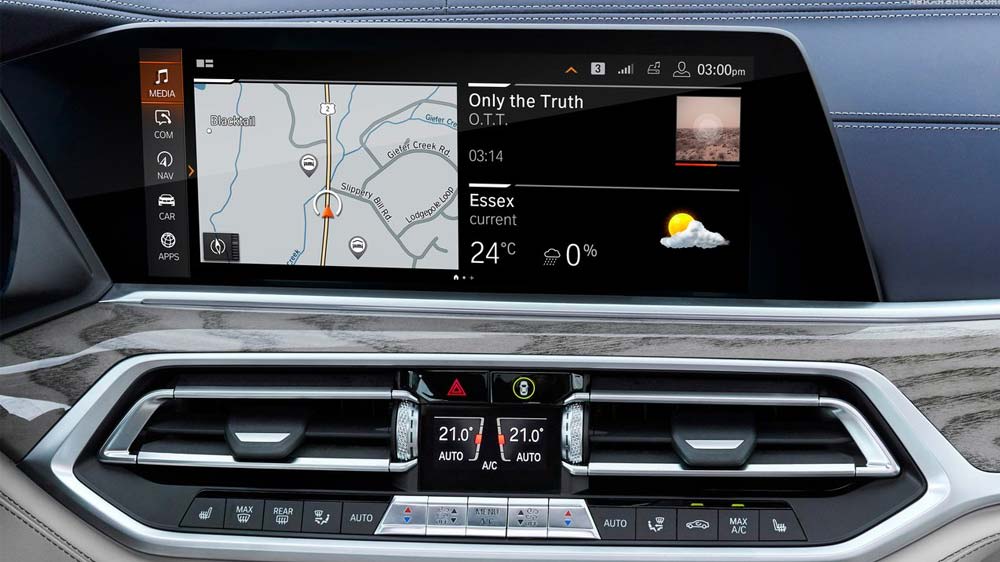
Audiophiles will be fairly content with the standard X7 sound system, but there’s always the chance to upgrade to the bigger Bowers & Wilkins system that comes as part of the Technology Plus Pack. That 20-speaker, 1,508-watt system packs some serious punch.
Practicality & Boot Space
With the external dimensions of Lord Grantham’s country retreat, you’d feel short-changed if the X7 wasn’t enormously spacious inside. Fortunately, there’s a massive amount of room in that high cabin. You can fit seven adults in perfect comfort, even on medium-length journeys. Admittedly, tall passengers might not want to spend three hours in that third row, but those under, say, 5ft 10in will probably be quite happy back there.
That said, getting into the third row of seats isn’t necessarily the most dignified process ever invented, so some passengers might tire of using them too regularly. Nevertheless, there’s no denying the versatility of the X7’s space. It can operate as a family bus, and it works as a posh limousine, with huge rear seats that swallow you up and cocoon you in comfort. Even if you’re driving, it’s a comfy, relaxing place to while away those motorway miles.
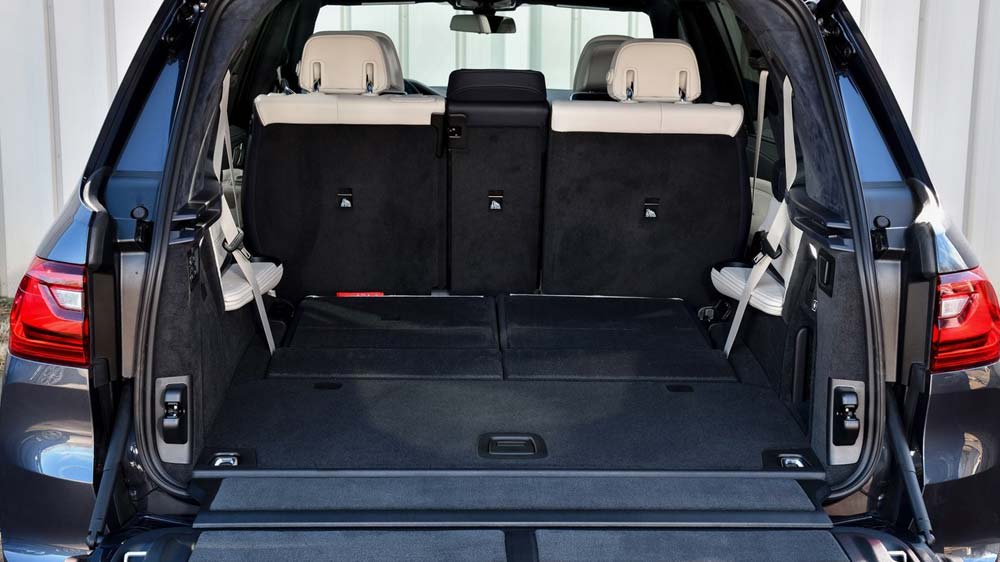
And if you go mad with the options list, you can have two big ‘captain’s chairs’ in place of the three second-row seats. That makes the car an even more competent limo, offering extra space and adjustability, but you do reduce the seat count to six.
Either way, the X7 will still serve as a big boot on wheels. Even with the rear seats upright, there’s 326 litres of space for luggage, and that’s more than you’ll find in a Vauxhall Corsa. Fold the seats down, though, and you’ll free up a mammoth 750 litres. But if that isn’t enough, you can fold the middle row down, too, offering an obscenely large 2,120 litres of space.
Even accessing that space is easy, thanks to the power-operated split tailgate that comes as standard, and the air suspension that can lower the car by 40mm to help with loading. The car can tow, too, and the lower half of that split tailgate operates as a handy seat for changing muddy boots.
Safety
BMW is big on safety tech these days, and as the new flagship SUV, the X7 has been issued a healthy serving of gizmos. The usual suspects – automatic emergency braking, lane departure warning and blind-spot monitoring – are all available, but the highlight is the ability to combine the adaptive cruise control and the lane-keeping assistance. The two systems work together to maintain a safe gap to the vehicle in front and to keep the car centred in its lane, reducing the driver’s workload. It’s a far cry from a self-driving car, as you still have to make all the decisions and keep your hands on the wheel, but it does reduce the strain on long drives.
If all the safety tech is beaten and the worst does happen, however, you might be a little put off by the fact the X7 still hasn’t been tested by Euro NCAP. But given its size and the strong performances of other models in the BMW range, we would be very surprised if the X7 failed to achieve a maximum five-star rating. There’s a fleet of airbags to keep you safe, along with Isofix seat mountings for child seats. These fixtures can also be found in the third row, which is something of a rarity even among the more family-friendly seven-seaters.
Options
In essence, the X7 range is divided into three, with the body of the range comprising ‘standard’ X7 models and the sportier-looking M Sport versions. Then the high-performance M50i engine comes with a trim level all of its own.
Whichever you choose, you can rest assured you won’t be acquiring a four-wheeled garden shed. The specifications are generous across the line-up, with even the base model getting the usual goodies such as leather, satellite navigation and 21-inch alloy wheels. But all that is a given when you’ve got such a big, expensive car as this.
More notable are the comfort seats, the panoramic glass roof and the chrome exterior trim. You get a digital instrument cluster, too, along with BMW’s brilliant infotainment system that combines touch controls with gestures and a control wheel in the centre console. Wireless phone charging is also standard, along with soft-close doors.
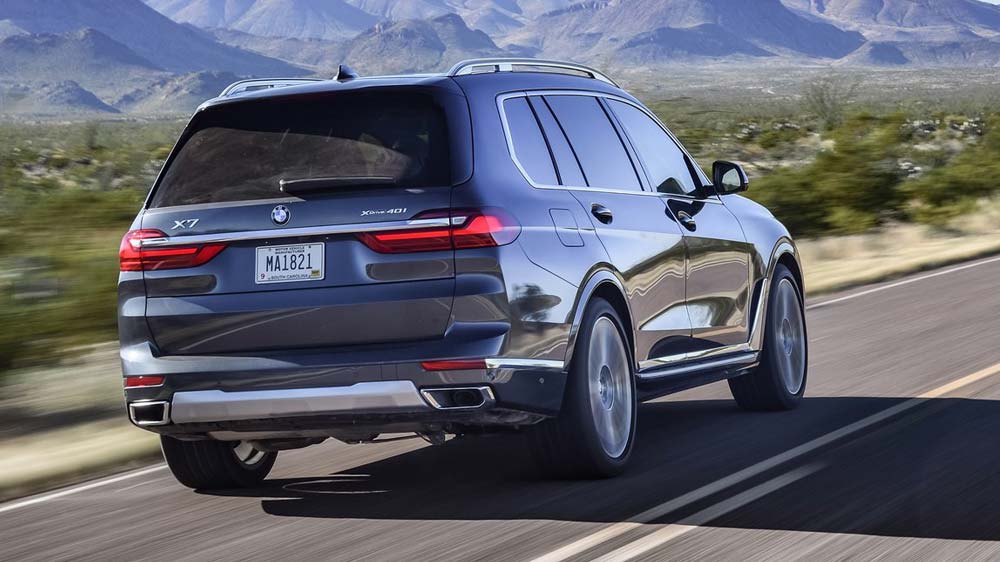
If you must move up to the M Sport models, you can have more aggressive styling, black trim around the windows and grille, and some beefier brakes. You get some black roof lining, too, which is designed to enhance the cockpit feel. A strange concept in such a massive car, but still…
Get the M50i, though, and BMW ups the ante yet again. The black trim is replaced with a kind of matt grey, and you get more performance-orientated mechanical tweaks.
In truth, the M50i doesn’t make much sense in a world where petrol is expensive and roads are tight. As a motorway cruiser, the standard X7 is the one to go for; probably with the 40d engine. Choose one of those with the lustrous, dark blue paintwork, and you’ll have a great luxury 4x4.
If you want more than that, we’d suggest opting for the Comfort Plus Pack, which gets you front seat ventilation, heated front armrests and a heated steering wheel, as well as climate-controlled cupholders. Yep, just like heated and ventilated seats, the cupholders can be warmed or cooled to suit whichever beverage you happen to be enjoying. And each cupholder is controlled individually, so the driver can cool their Coke while the passenger warms their cappuccino. It’s the invention you never knew you needed.
Who Rivals The BMW X7?
Arguably the BMW’s biggest rival comes from down the road. Head west from BMW’s Munich headquarters, and you’ll find the home of the Mercedes-Benz GLS – a car that also tries to make the SUV world a little less agricultural. It’s roomy and stylish and seats seven, but it doesn’t have the sporty pretensions of the X7.
Nor does the Range Rover, which has dominated this market for years. A more capable off-roader than the GLS and X7, it’s also more instagrammable, but it’s getting long in the tooth and doesn’t feel as solid inside. That accusation can’t be levelled at the other British contender – the Bentley Bentayga. Based on the Audi Q7, it’s enormously capable and hugely luxurious, but it doesn’t feel quite as special as Bentley’s saloons and grand tourers.
The Rolls-Royce Cullinan, however, is a much more exclusive proposition. It’s massive and it’s perhaps a little chintzy, but there’s no doubting its presence and its opulence. The options list is almost endless, but it’s a hand-crafted ode to excess. There’s something fabulous about that.
Verdict & Next Steps
Look past the swollen grilles and you’ll find a very capable car in the X7. Perhaps the Bentley Bentayga and Range Rover have more street cred, but the BMW makes up for that with sheer bulk and presence. But there’s more to it than that, because it’s a true luxury car that just so happens to be capable of driving through a snowdrift or through a stream. It may not have the celebrity endorsements of a Bentley or a Rolls-Royce, but it’s well engineered and well thought through, which gives it an appealing under-the-radar allure.
Where to next?
View latest BMW X7 car leasing deals - from just £836.76 per month inc VAT**
Looking for a great car lease deal? Check out our incredible range of Special Offers
New luxury SUV? Read our latest Car Reviews and find the right model for you
Want to know more about leasing? Take a look at our comprehensive Leasing Guides
Interested in everything motoring? Why not catch up on all the latest Car Leasing News.
*Score based on Select’s unique meta score analysis, taking into account the UK’s top five leading independent car website reviews of the BMW X7.
**Correct as of 14/12/2020. Based on 9 months initial payment, 5,000 miles over a 48 month lease. Initial payment equivalent to 9 monthly payments or £7,530.84 Ts and Cs apply. Credit is subject to status.
